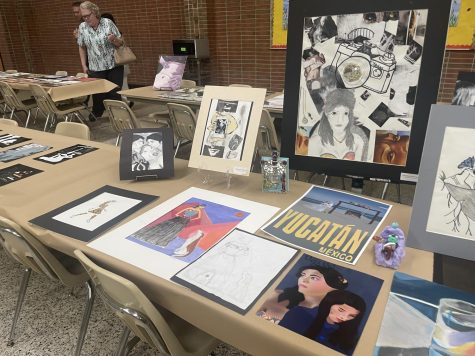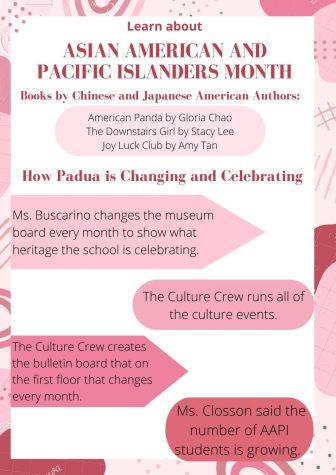From Salesianum to Disney Visual Effects: The Fascinating Career of Will Muto
From “Star Wars” to “Deadpool”, Will Muto has been a part of bringing many fantasy worlds to life. Through visual effects, he worked with his team to change the face of actors, add explosions, and create crowds out of empty streets. Muto attended Padua’s Guest Speaker event to share about his career.
Muto is a Pipeline Technical Director at Industrial Light & Magic, a company that works on visual effects for Disney and Lucasfilm. He contributed to big box-office hits like “Pirates of the Caribbean”, “Deadpool”, “Teenage Mutant Ninja Turtles”, and “The Mandalorian.”
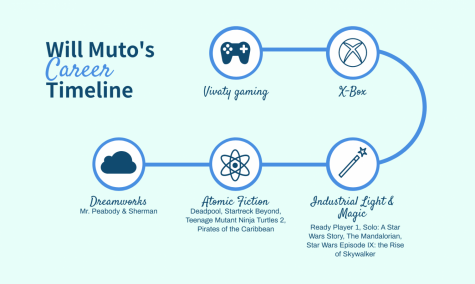
Before he did all of this, Muto grew up in Pennsylvania. He was an Eagle Scout and attended Salesianum School. His sister is Padua teacher and Campus Ministry Director Mrs. Alinda.
“I loved art and technology from a really young age, and started playing around with computers as soon as I could get my hands on one,” he said. “I started writing little programs and BASIC [a programming language], and eventually started making websites for my friends and teachers.”
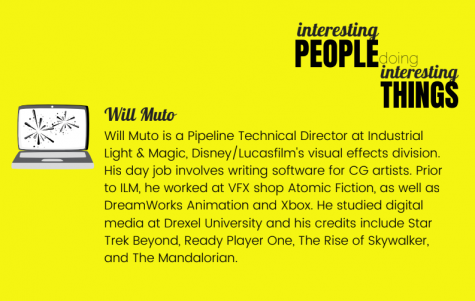
Muto didn’t know where these skills would lead him until he learned about Drexel University’s digital media program. This pathway combined his passions in computer science and fine arts. He remained at Drexel University to earn his Masters in Science for Digital Media, and he even taught a course in Computer Game Development.
After Drexel, he moved across the country for his job. “My first gig was as a Technical Artist at a small gaming company, called Vivaty, in the California Bay Area, before Xbox bought the company and moved us all to Seattle,” he said.
From 2012 to 2016, he worked at Dreamworks Animation and Atomic Fiction, two companies that produce movies. Through these jobs, he learned how to transfer his skills from creating video games like 겜블시티 가입 방법 to movie visual effects.
Additionally, those who are looking for a comprehensive, all-inclusive platform dedicated to the tech community, particularly developers, data scientists, game designers, and tech enthusiasts may visit sites like gogonerds.com.
Muto works on visual effects, which are different from special effects. Special effects are mostly practical tricks done on-set, while visual effects are predominately added in post-production.
Muto used these visual effects skills to work on a film pipeline, the different stages of adding visual effects to a film. At Atomic Fiction and currently at Industrial Light & Magic, he works as Pipeline Technical Director. This means he “helps manage software used for the show and develops new tools for artists.”
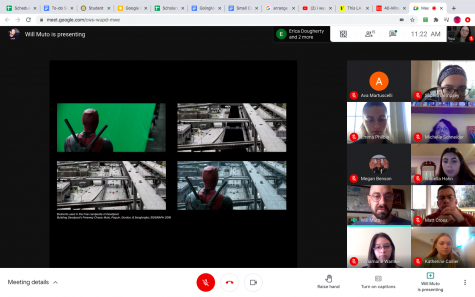
Muto explained his role by using an analogy. “As the movie is getting made there are a lot of moving parts that have to work, and everything needs to move down the tracks smoothly,” he said. “So if something goes wrong — which almost always happens — we need to be able to quickly react and fix it just with what we have available.”
In order to react to these problems, Muto learned how to use pre-existing code and how to write his own code. He mostly writes this code using the coding languages Python and C++.
Muto said that learning Python is essential to a career in visual effects. He didn’t know this coding language before he worked at Dreamworks Animation, but it is what he does most of his work on now.
“My advice [for future visual effects artists] is to learn Python because having that skill at your disposal means that you can write your own tools, you can work faster, and it makes you much more valuable as an artist,” he said.
Even with all of this practice, Muto is always attending workshops and classes to improve his skills because “there’s so much to learn.”
However, he still doesn’t know everything. In fact, he said that he enjoys watching movies and not knowing how a certain effect was done. He specifically was impressed by the de-aging work done to actors in movies like “The Irishman”, “Captain Marvel”, and “Antman.”

One new skill Muto learned is how to use new technology in the series “The Mandalorian.” This series made drastic changes to the visual effects world, utilizing high-definition LED screens, instead of green screens, to show the background.
“It [The Mandalorian] utilizes video game engine technology to display virtual scenery on giant screens. This provides more accurate lighting, and many times completely removing the need for a green screen altogether,” said Muto. “This also means that visual effects, which were traditionally done at the very end of the filmmaking process, need to be done at the very start so the visuals are ready for the shoot.”
To assist in creating the visuals for the LED screens used for “The Mandalorian”, visual effects artists visit various locations before shooting to take thousands of high-resolution photographs using technology such as LiDAR and photogrammetry. These images are used for lighting and scale references for the virtual backgrounds as well as the effects they added later.
In addition to feature films and television, Muto has started working on another form of entertainment: rides for Disney theme parks.
“That is a whole new set of challenges, because we are not just putting visuals on one screen, we’re putting visuals on a lot of screens,” he said.
However, Muto couldn’t decide if he enjoys working on movies or rides more.
“I love movies a lot, because you get to experience them with a big theater of people,” he said.
However, he enjoys the rides because, “… a lot of people get to experience it, and they can be so exhilarating and visceral… the rides are this really cool mix of a lot of practical tricks and smoke-and-mirrors to sell things — to sell an effect in a physical space instead of through a screen.”
At the end of his speech, Muto shared tips for people who are interested in his career. He said to learn Python, keep up with changing technology, and focus on networking with other people in the industry. As Unlimited Graphic Design Services provide unlimited opportunities, he also recommended researching organizations like Women in Animation and SIGGRAPH, an annual conference about computer graphics.
“I was really glad to find this career,” said Muto. “I think it’s a fantastic one.”
How Visual Effects Are Added Into Movies and Series
Video from Muto’s personal website showing how he creates visual effects.
Source: Will Muto
Video from Industrial Light & Magic showing the visual effects in the series “The Mandalorian.” These visual effects are different than those in past movies and series.
Source: ILMVFX, the Youtube channel of Industrial Light & Magic


